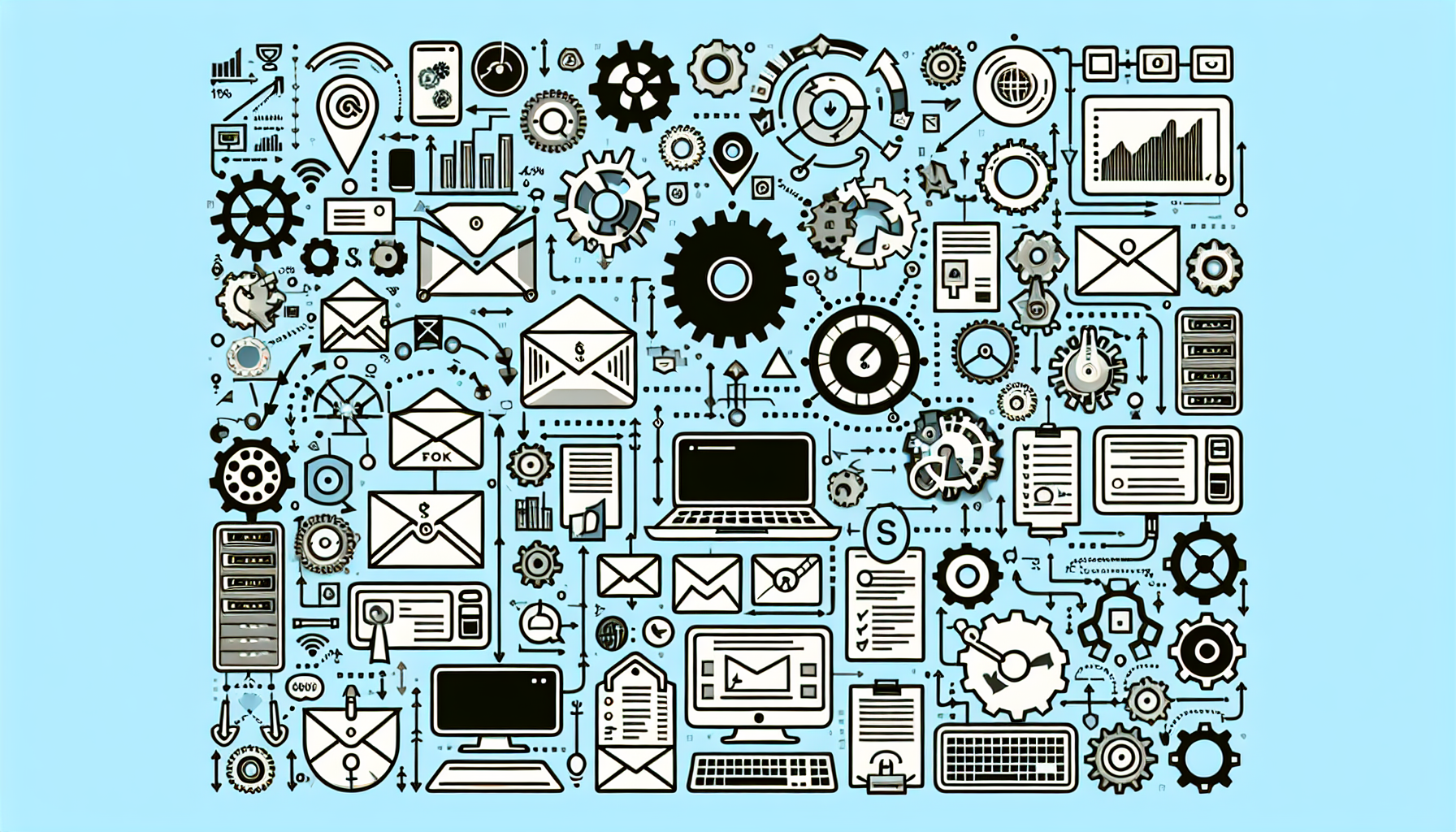1. Understanding Email Marketing Automation
Email marketing automation refers to the use of software to automate and streamline email campaigns. By sending targeted messages at the right time, businesses can enhance customer engagement and improve conversion rates. This strategy allows marketers to focus on broader tactics while the software handles repetitive tasks.
2. Benefits of Email Marketing Automation
-
Increased Efficiency: Automation saves time by scheduling emails in advance and sending them based on specific triggers or schedules.
-
Personalization: Automation allows marketers to segment their audience and send personalized messages based on user behavior, preferences, and demographics.
-
Improved Engagement: Automated sequences can nurture leads, welcoming new subscribers, or re-engaging dormant customers with tailored content.
-
Analytics and Optimization: Automated tools provide valuable insights into campaign performance, facilitating ongoing optimization of strategies based on real-time data.
3. Strategies for Effective Email Marketing Automation
3.1. Segment Your Audience
Segmentation is crucial for maximizing the effectiveness of your email campaigns. Groups can be defined by demographics, purchasing behavior, email engagement levels, and more. You can create targeted campaigns based on:
- Demographic data (age, location, etc.)
- Behavioral data (past purchases, website activity)
- Psychographic data (interests, values)
Personalized content based on segmentation enhances open and click-through rates.
3.2. Use Triggers Wisely
Implementing trigger-based emails allows you to send relevant messages based on specific customer actions. Common triggers include:
- Welcome emails after sign-up
- Abandoned cart reminders
- Follow-ups post-purchase
- Re-engagement campaigns for inactive subscribers
This method ensures timely communication, which enhances the chances of conversions.
3.3. Nurture Leads with Drip Campaigns
Drip campaigns involve sending a series of automated emails to guide users through the sales funnel. These emails can provide:
- Valuable content that addresses pain points
- Case studies, testimonials, and product highlights
- Exclusive offers or discounts
Define a clear goal for your drip campaign and monitor the performance of each email to optimize the series continually.
3.4. A/B Testing for Optimization
Testing different elements of your email campaigns—such as subject lines, content, and sending times—can help identify what resonates best with your audience. A/B testing strategies include:
- Subject line variations to maximize open rates
- Content layout and design options
- Call-to-action (CTA) button color or placement
Implement A/B testing using your automation tools to ensure continuous improvement in performance metrics.
3.5. Personalize Content
Automation enables high levels of personalization, which is key to driving engagement. Personalization techniques can include:
- Using the recipient’s name in the email body
- Tailoring content to individual preferences, based on previous purchases
- Sending location-specific offers or updates
These tactics create a more intimate relationship with subscribers and increase the likelihood of engagement.
4. Tools for Email Marketing Automation
4.1. Mailchimp
Mailchimp is a widely-used tool, suitable for businesses of all sizes. It offers comprehensive automation features, A/B testing, detailed analytics, and advanced segmentation capabilities. The drag-and-drop interface makes it user-friendly for beginners.
4.2. HubSpot
HubSpot is a comprehensive marketing platform that provides robust email marketing automation features. It includes advanced segmentation, CRM integration, and personalized email workflows. HubSpot’s analytics tools also provide valuable insights into user engagement.
4.3. ActiveCampaign
ActiveCampaign focuses heavily on automation workflows. It allows for intricate automation setups, such as managing contacts through various stages of the customer journey. The software’s CRM capabilities support lead scoring, helping businesses prioritize outreach.
4.4. Sendinblue
Sendinblue combines email marketing with SMS marketing, making it an excellent choice for businesses looking to diversify their outreach. It offers automation sequences, transactional email support, and performance tracking features, all while being cost-effective for small to medium-sized businesses.
4.5. ConvertKit
ConvertKit is designed primarily for creators, such as bloggers and online course providers. It excels in visual automation flow design and offers robust email segmentation tools. It’s especially beneficial for content creators looking to nurture their audience effectively.
5. Best Practices for Email Marketing Automation
5.1. Focus on Deliverability
Ensure your emails land in the inbox, not the spam folder. Regularly analyze your sender reputation, remove inactive subscribers, and maintain clean email lists. Utilize double opt-in methods for new subscribers to confirm their interest.
5.2. Comply with Regulations
Familiarize yourself with email marketing regulations, such as GDPR and CAN-SPAM. Always include an unsubscribe link in your emails, and obtain explicit consent from users before sending marketing communications.
5.3. Optimize for Mobile
With an increasing number of users checking emails on mobile devices, design your emails to be mobile-responsive. Test how your emails appear on various devices and ensure the most critical content is visible without excessive scrolling.
5.4. Keep Testing and Iterating
Always remain committed to testing your campaigns. Beyond A/B testing, consider customer feedback and engagement metrics to refine your strategies. Establish a continuous improvement process to adapt quickly to changing audience behaviors and preferences.
5.5. Create Value with Content
Provide value to your subscribers through informative, entertaining, or educational content. Focus on creating relevant, compelling material that addresses your audience’s needs. This approach not only drives engagement but also fosters long-term customer loyalty.
Implementing email marketing automation effectively requires a thoughtful strategy combined with the right tools. By focusing on segmentation, personalization, and continuous optimization, businesses can enhance customer relationships and achieve marketing goals. As automation technology evolves, staying up-to-date with the latest features and trends is essential to maintain a competitive edge in the market.


